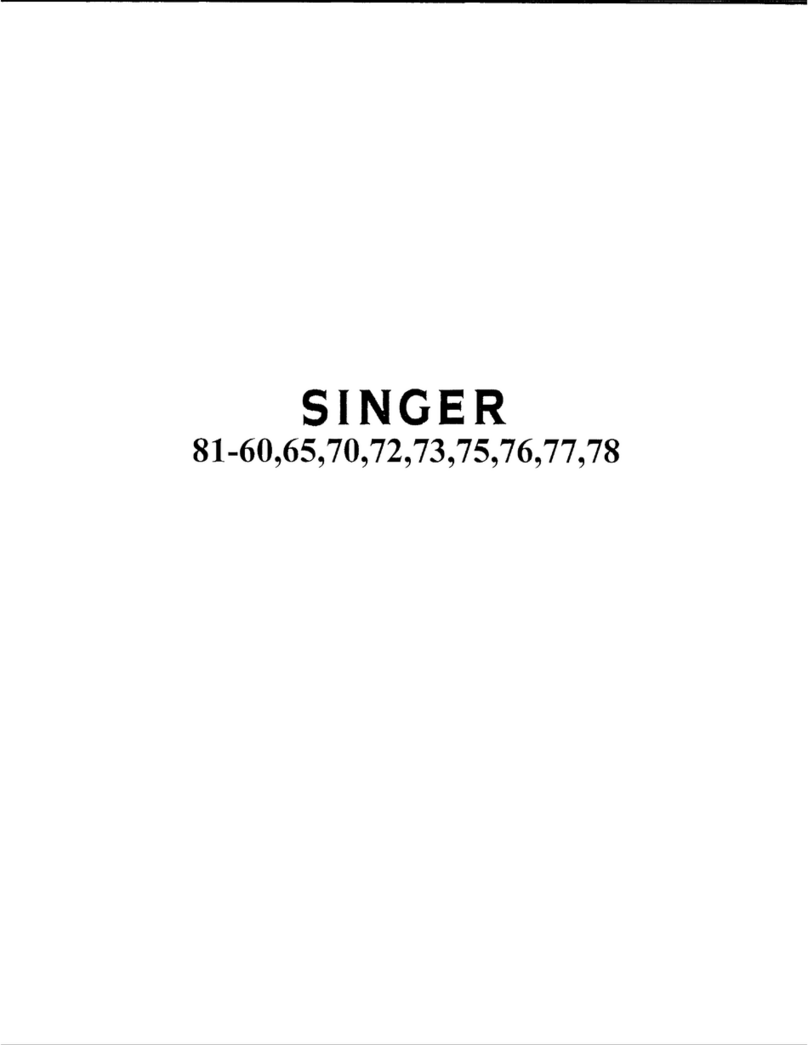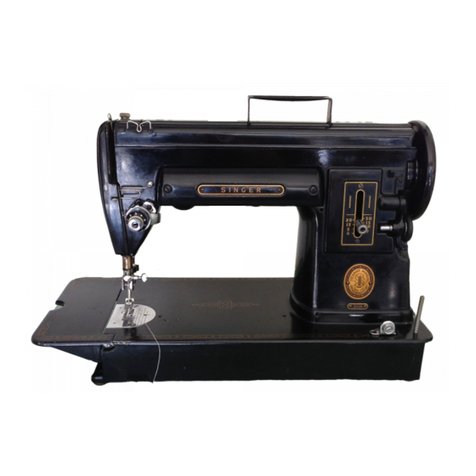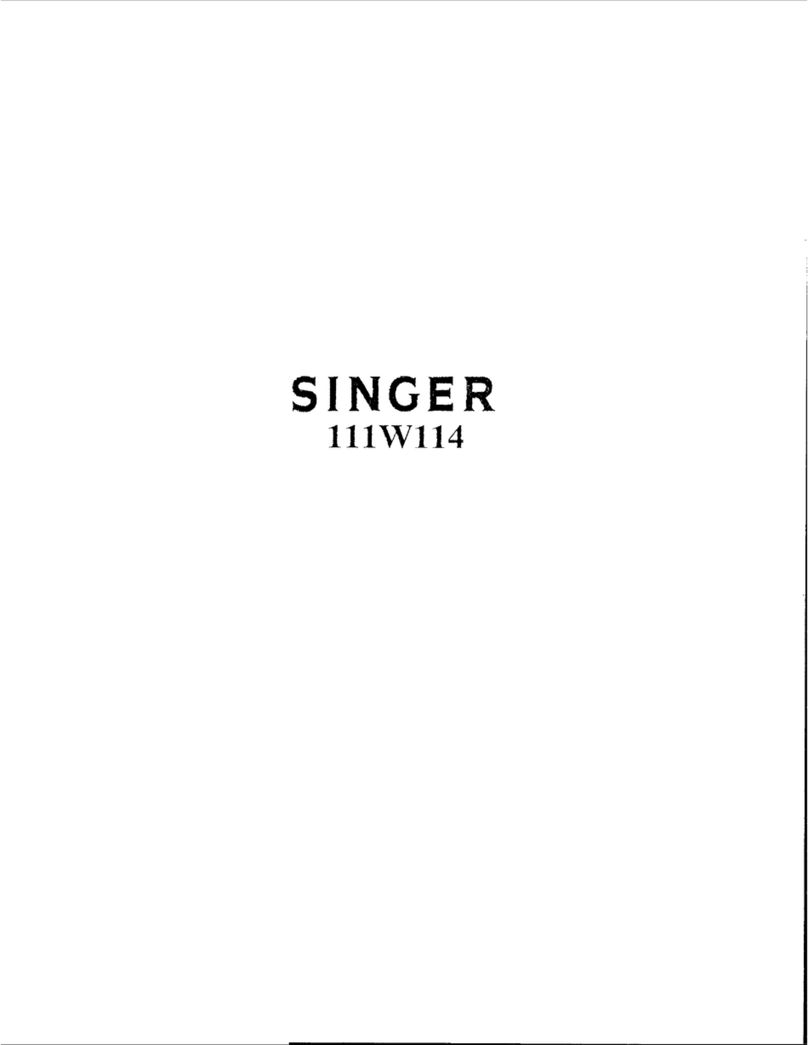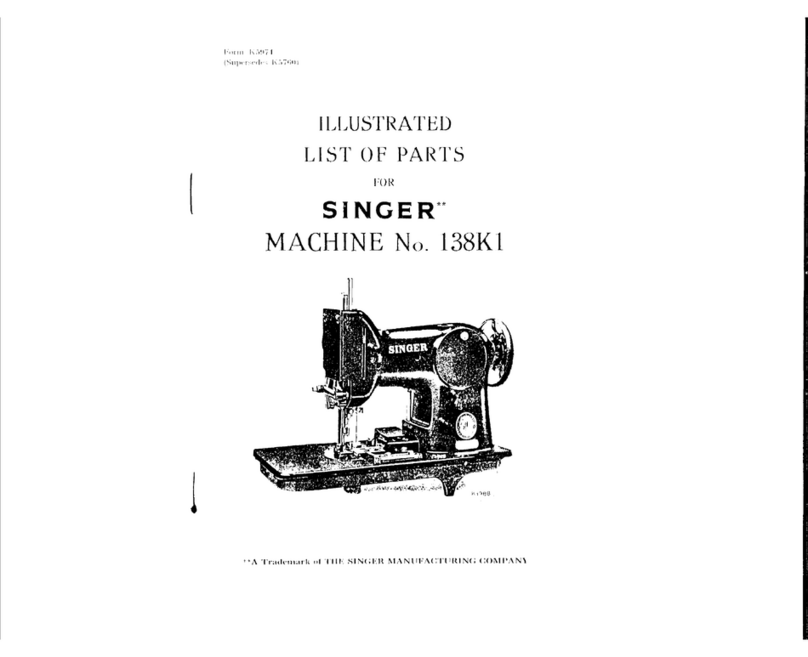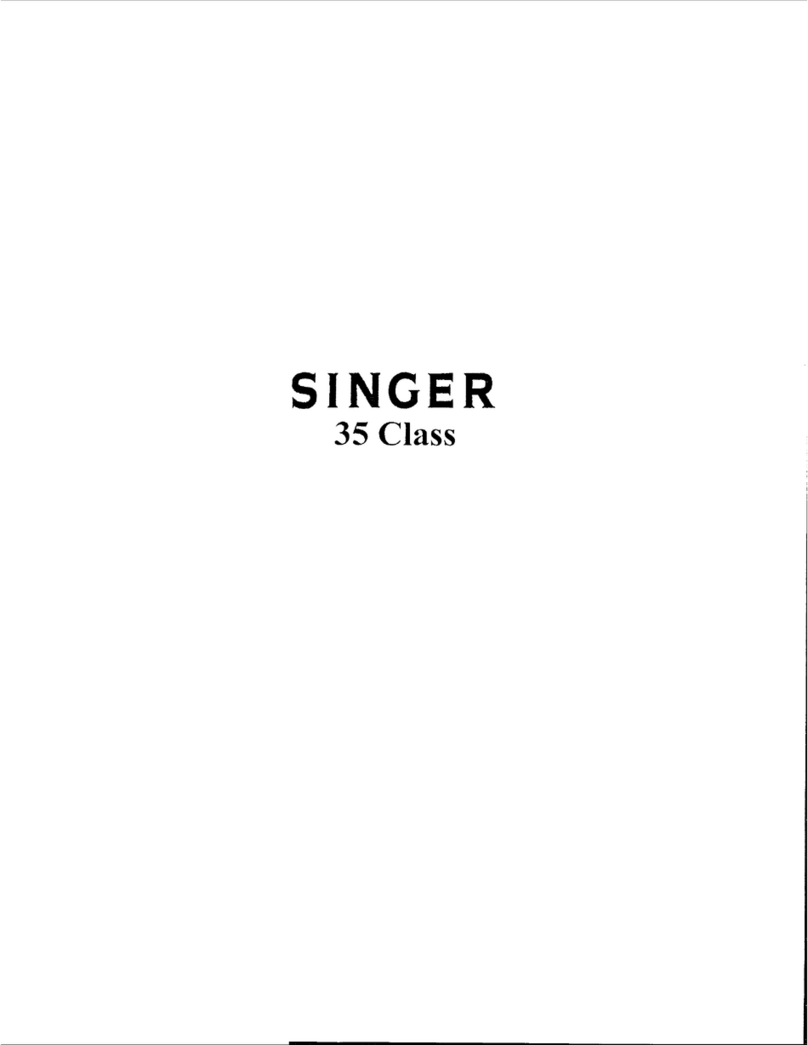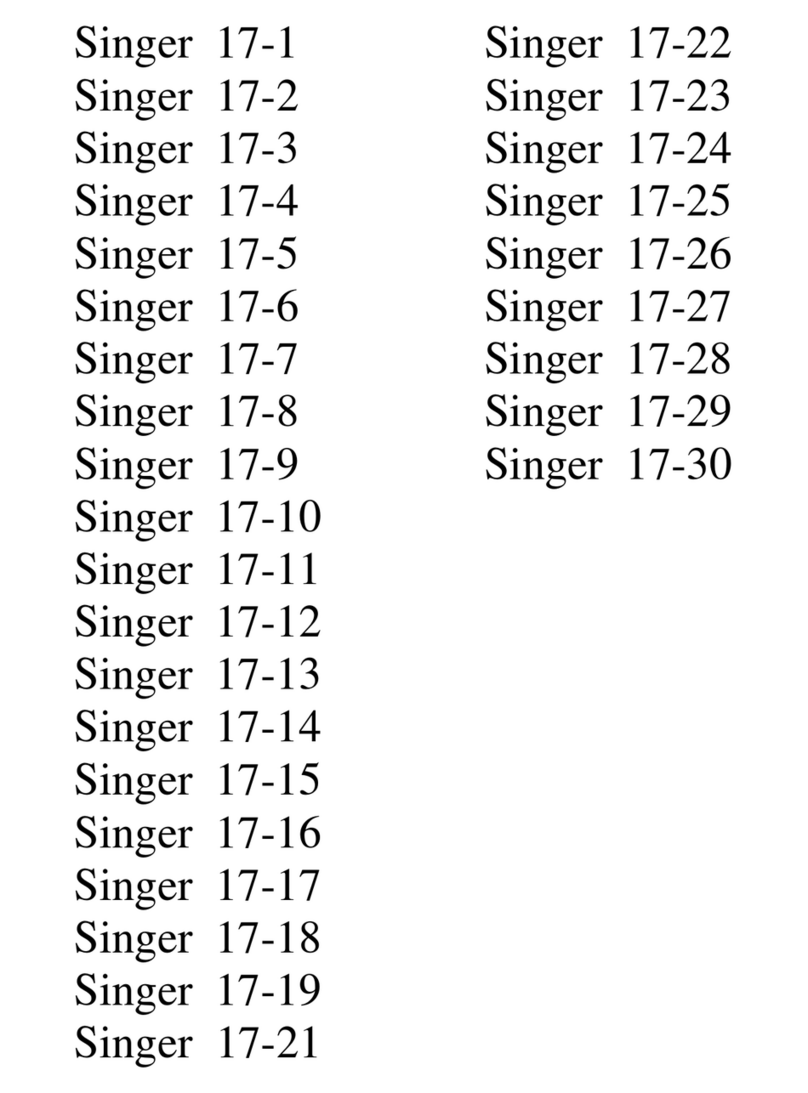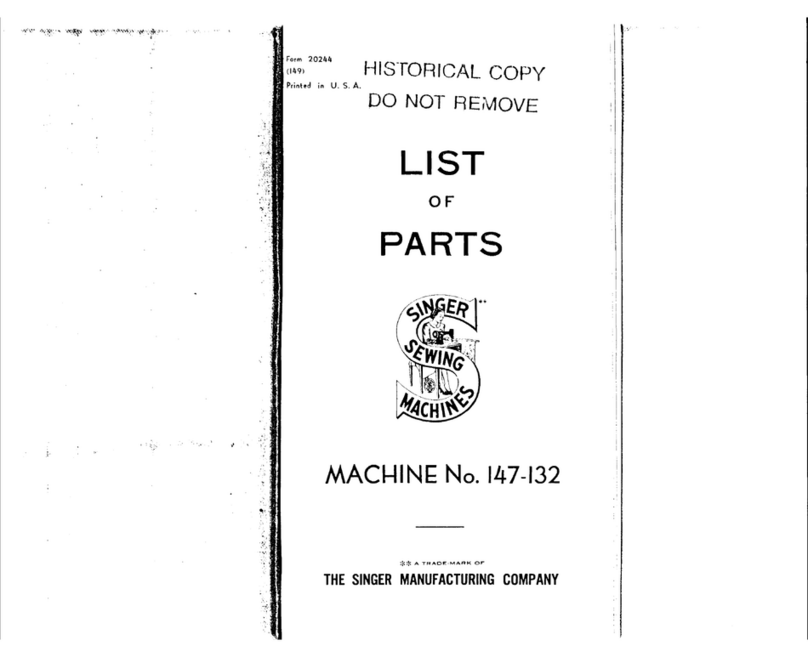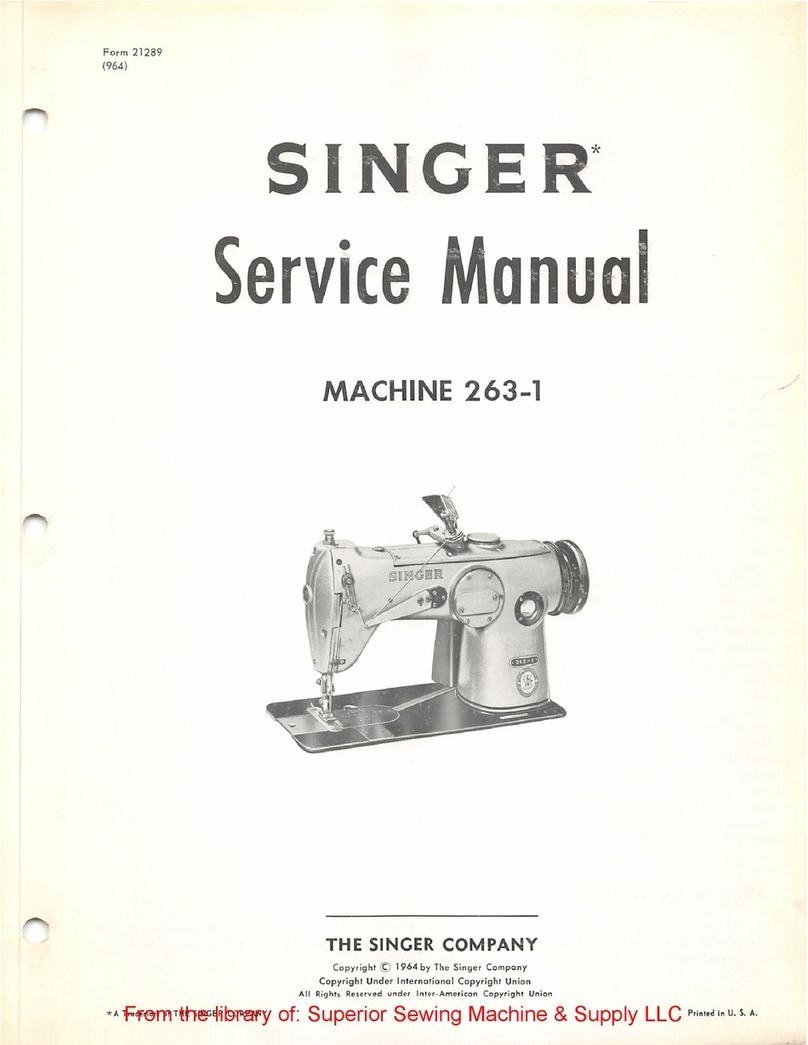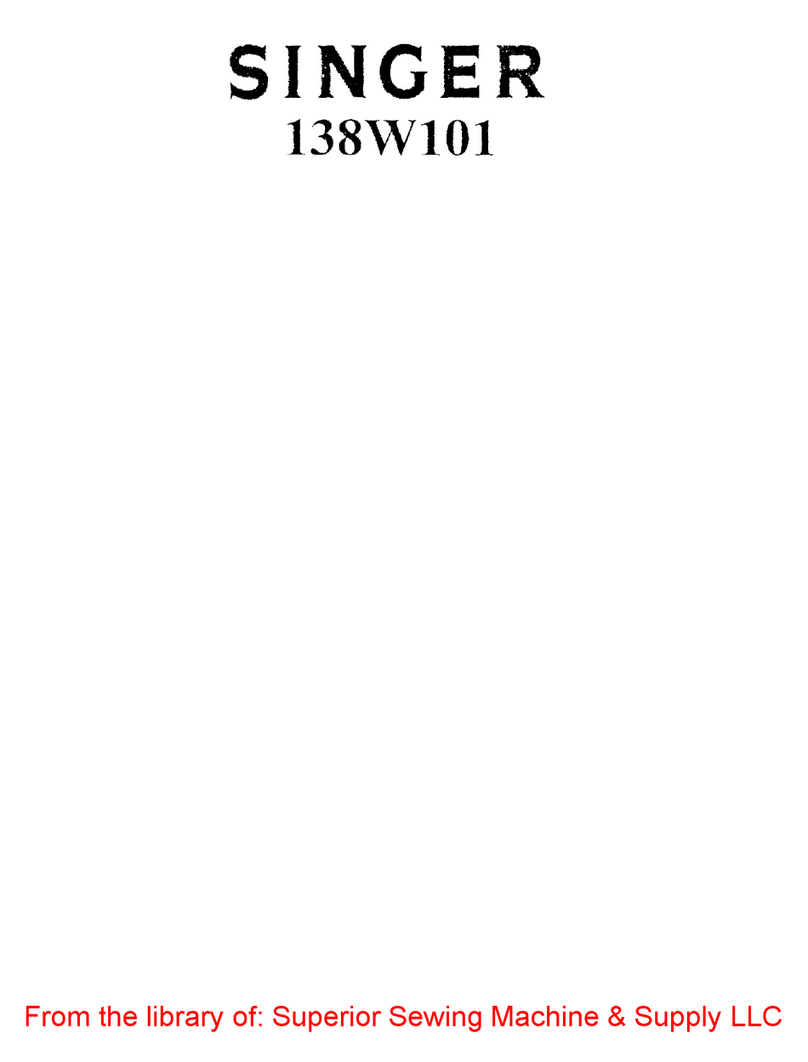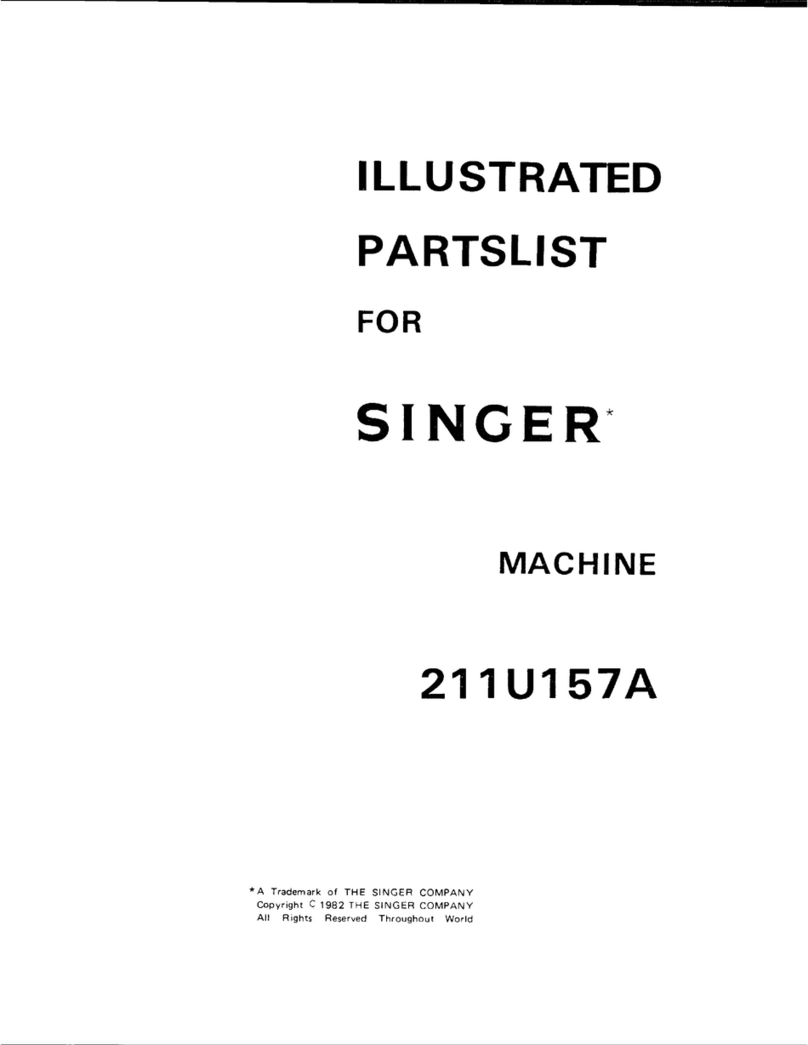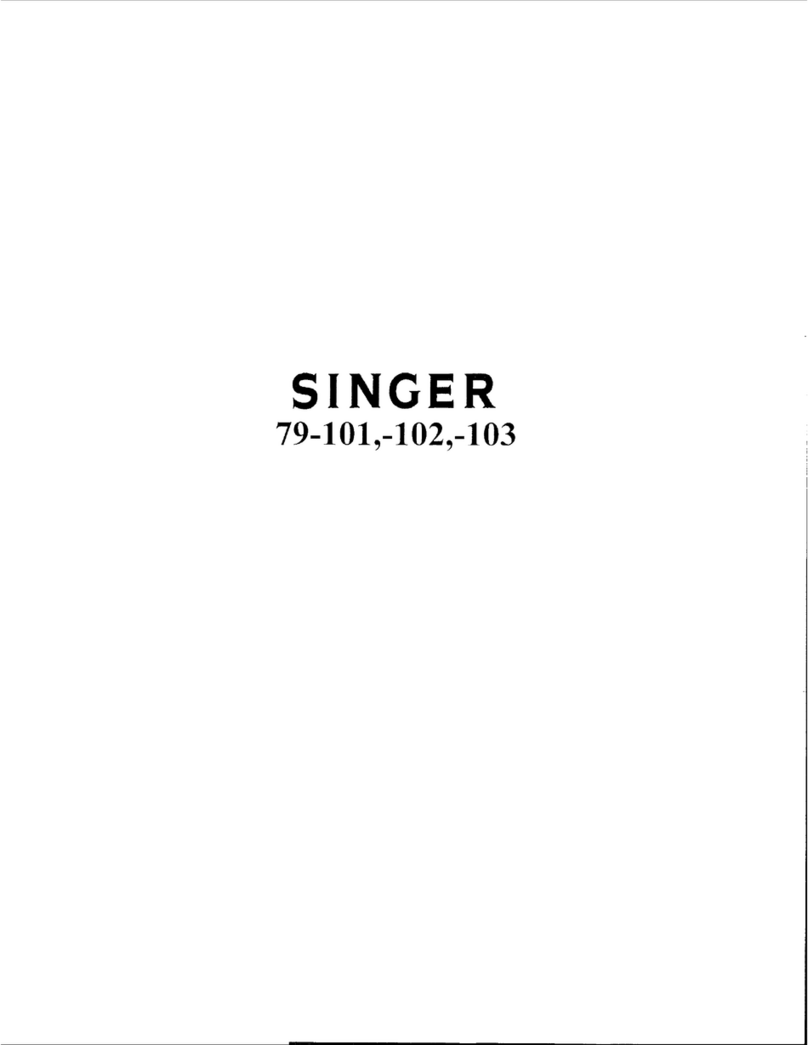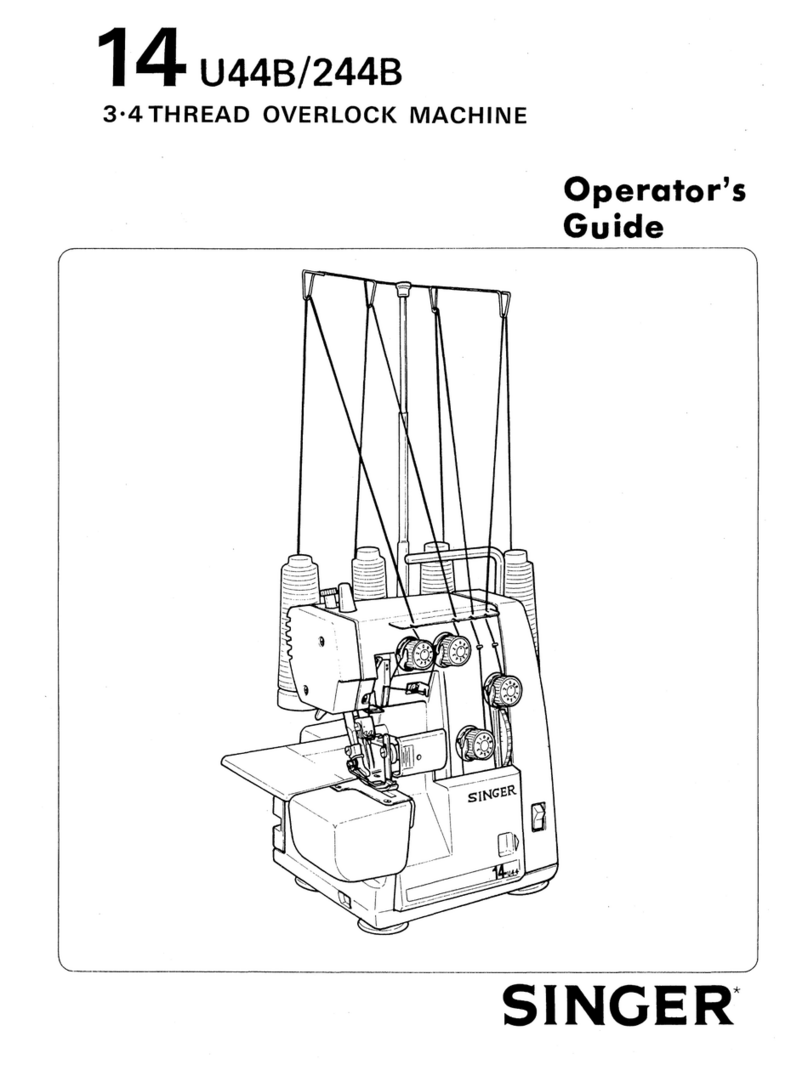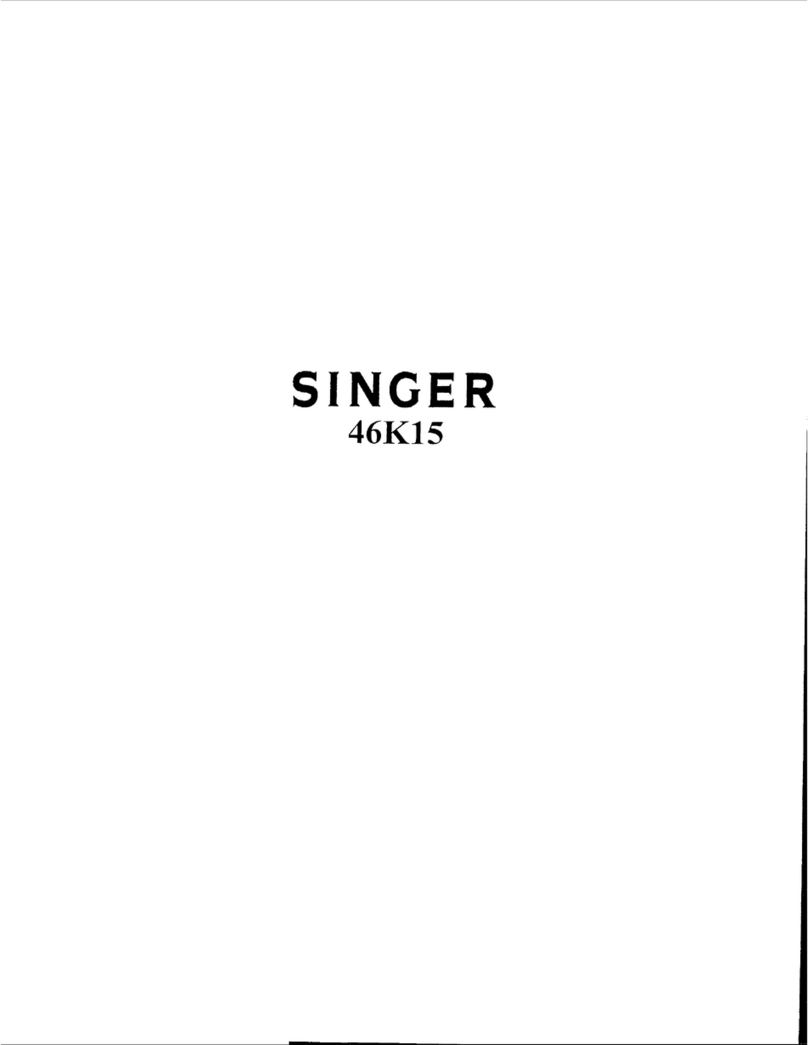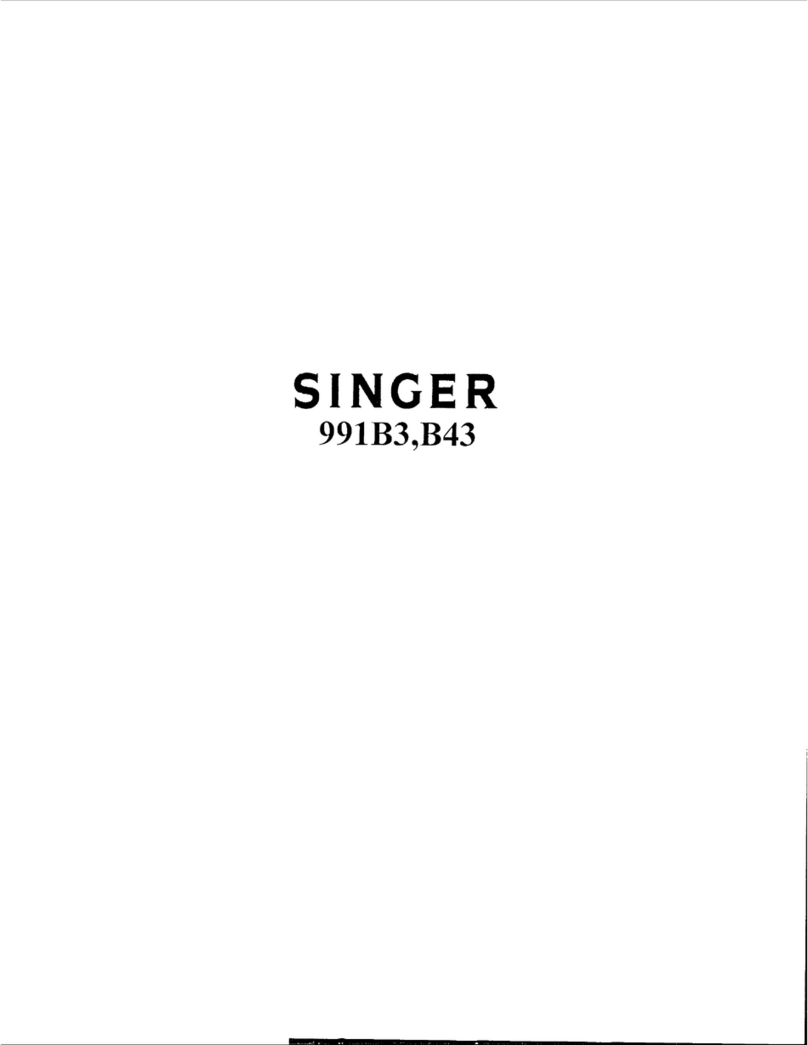1
CS09?A
Fig. 20. Drawing Up Bobbin Thread
LESS
T
xu.?
£-5095^
Fig. 21. Perfect Stitch
WJi^'^Au
Fig. 22. Needle Thread Tension
Too Tight
Fig. 23. Needle Thread Tension
Too
Loose
MORE
TENSION
J
Fig. 24. Regulating Bobbin
Thread
Tension
Fig. 25. Regulating Needle
Thread
Tension
TO
PREPARE
FOR
SEWING
(See Fig.
20)
• Hold slack
end
of
needle
thread
loosely
and
turn
machine pulley over
away
from you until needle
moves down
and
up
again
to its highest point, catch
ing
bobbin
thread.
• Draw up needle thread; bobbin
thread
will come
up with it through hole in throat plate, as shown in
Fig.
20.
• Lay both threads back under presser foot.
•
Close
bed
slide.
Always keep bed slide closed when machine is in
operation.
THREAD
TENSION
Forordinary stitching, tension on needle and bobbin
threads
should
be
balanced
with
needle
and
bobbin
threads
locked
in
centre
of
thickness
of
material
as
shown
in
Fig.
21.
When
there
is
too
much
tension
on
needle
thread
or not enough on bobbin thread, needle
thread
can
not be pulled down into material, as required. Poor
stitching results. Needle
thread
lies on top of material
as
shown
in Fig.
22.
When
there
is
too
much
tension
on
bobbin
thread
and
not
enough
on needle
thread,
you
get
the reverse
of
the
condition
shown
in Fig.
22.
The stitching is just
as poor.
Bobbin
thread lies on bottom of material as
shown
in Fig.
23.
NEEDLE
THREAD TENSION
SEHING
FOR GENERAL PURPOSES
When
machines
leave
the
factory,
the
needle
thread
ten
sion
thumb
nut
is
set
to
a
position
for
sewing
most
light
and
medium
threads
without
adjustment.
Should
this
setting
be lost,
the
minimum
tension
at
which
the
machine
will
sew
a
medium
thread
should
be
established.
At
this
setting
a
variety
of
threads
can
be sewn.
TO
REGULATE
BOBBIN
THREAD
TENSION
For
average
sewing, tension on bobbin thread
should be very light.
To regulate tension on bobbin thread, remove bob
bin case
and
turn screw in tension spring,
as
instructed
in Fig.
24.
When
once
the
tension
on
bobbin
thread
has
been
correctly adjusted for ordinary stitching, required
stitch can usually be obtained thereafter to suit the
work in process by varying tension on needle thread
only.
TO
REGULATE NEEDLE THREAD
TENSION
Before
the
initial
needle
thread
tension
adjustment,
obtain
the
correct
tension
on
bobbin
thread,
as
in
structed
above.
Tension on
needle
thread
should
be
just
enough
to set stitch correctly in material.
Regulate needle thread tension only when presser
foot is
down.
Needle
thread
tension is
automatically
released when presser foot is raised.
Having lowered presser foot, turn thumb nut
at
front
of
tension
discs,
as
instructed
in Fig.
25.
PRE-TENSION
SEHING
The
purpose
of
this
tension
is to
ensure
that
the
needle
thread
grips
the
rotary
tension
wheel.
Insufficient
pre-tension
will
cause
looping
or
thread
break
-
age with heavy materials
and
thread.
Excessive pre-tension
will
make
it impossible to get a sufficiently light needle
thread
tension
when
using
very
light
threads.
